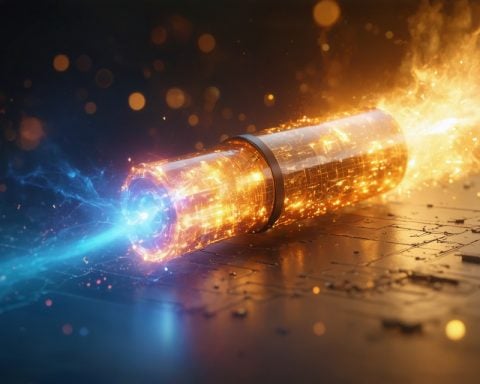Supply and Demand Crisis Looming for Battery Raw Materials
A recent McKinsey report warns of a significant challenge facing the battery and automotive sectors: the growing demand for critical raw materials used in batteries amidst an uneven regional supply. By the year 2030, a dramatic shift towards battery electric vehicles (BEVs) is expected, with annual sales projected to spike from 4.5 million to an astounding 28 million units.
Such a surge will likely create severe pressure on the availability of key materials like lithium, high-purity manganese, and graphite, posing a significant hurdle to efforts aimed at reducing Scope 3 emissions. As the industry evolves, newer battery technologies, particularly lithium iron phosphate (LFP) batteries, are presenting some solutions. These batteries lessen reliance on more scarce resources like cobalt and nickel but still demand substantial quantities of lithium and manganese.
Data indicates that nearly 40% of emissions associated with batteries originate from raw material extraction and processing. Therefore, minimizing the carbon footprint of these foundational practices is critical for advancing decarbonization initiatives.
Experts from McKinsey suggest that by prioritizing partnerships with suppliers dedicated to low-emission strategies, battery manufacturers could reduce emissions during production phases by up to 80%. However, a focus on reducing costs remains paramount given the competitive pressures within the industry.
Moreover, as consumer preferences shift towards LFP batteries, there is a risk that the emissions contributions from materials like manganese could increase if proactive strategies are not employed. It’s clear that while opportunities exist, the path forward is fraught with challenges that need immediate attention.
The Upcoming Supply and Demand Crisis for Battery Raw Materials: Challenges and Opportunities
The Rise of Battery Electric Vehicles (BEVs)
The transition towards Battery Electric Vehicles (BEVs) is on the rise, with a forecasted increase in annual sales from 4.5 million in 2021 to a staggering 28 million by 2030. This shift presents a pressing challenge: a looming supply crisis regarding critical raw materials necessary for manufacturing batteries.
Key Raw Materials Under Pressure
Crucial materials such as lithium, high-purity manganese, and graphite are set to experience soaring demand. The growing reliance on these materials raises questions about sustainability, environmental impact, and supply chain stability. It is crucial to develop strategies that can alleviate stress on these resources while accurately predicting market trends.
Battery Technology Innovations: LFP Advantage
Lithium Iron Phosphate (LFP) batteries are emerging as a leading solution amidst this crisis. LFP technology reduces dependence on limited resources like cobalt and nickel; however, it still relies heavily on lithium and manganese. Companies adopting LFP batteries will have to balance performance with availability and sustainability considerations.
Carbon Footprint Considerations
As data suggests, nearly 40% of emissions related to batteries stem from raw material extraction and processing. Thus, minimizing the carbon footprint throughout the supply chain is vital. Embracing low-emission methods and fostering partnerships with supply chains focused on sustainable practices presents an opportunity to dramatically lower emissions generated during production, potentially by up to 80%.
Strategies for Mitigating Emission Risks
1. Supplier Partnerships: Collaborate with suppliers committed to sustainable mining practices to ensure lower carbon footprints.
2. Investment in Recycling: Developing and optimizing recycling technologies for battery materials will lessen demand for raw materials.
3. Alternate Materials: Research and invest in alternative materials that can replace critical yet scarce resources.
Potential Market Limitations
In the face of rising demand, there are significant limitations such as geopolitical tensions affecting supply chains, mining regulations, and fluctuating market prices for raw materials. Companies will need to navigate these challenges cohesively to ensure not only production capabilities but also compliance with environmental regulations.
Future Trends and Insights
As the industry evolves, here are some insights to consider:
– Sustainability Focus: Companies will likely pivot towards environmentally responsible methods for extracting and processing materials.
– Consumer Awareness: Educated consumers are demanding transparency in the sourcing of battery materials, influencing manufacturers to improve supply chain ethics.
– Investment in Technology: Advancements in mining technology and battery recycling processes will play a crucial role in meeting future demands.
Predictions for 2030 and Beyond
Experts predict that by 2030, technological innovations and improved practices will help ease some strain on raw materials. Enhanced recycling methods may provide a supplemental supply of necessary materials, further refining the supply chain. However, continued growth in BEV sales will require constant adaptation.
In conclusion, the intersection of increasing BEV sales and the demand for battery materials presents both challenges and opportunities. Industry stakeholders must work collaboratively to create a sustainable and resilient supply chain while meeting the growing demands of the electric vehicle market. For further insights into the battery materials market and emerging trends, visit McKinsey & Company.













